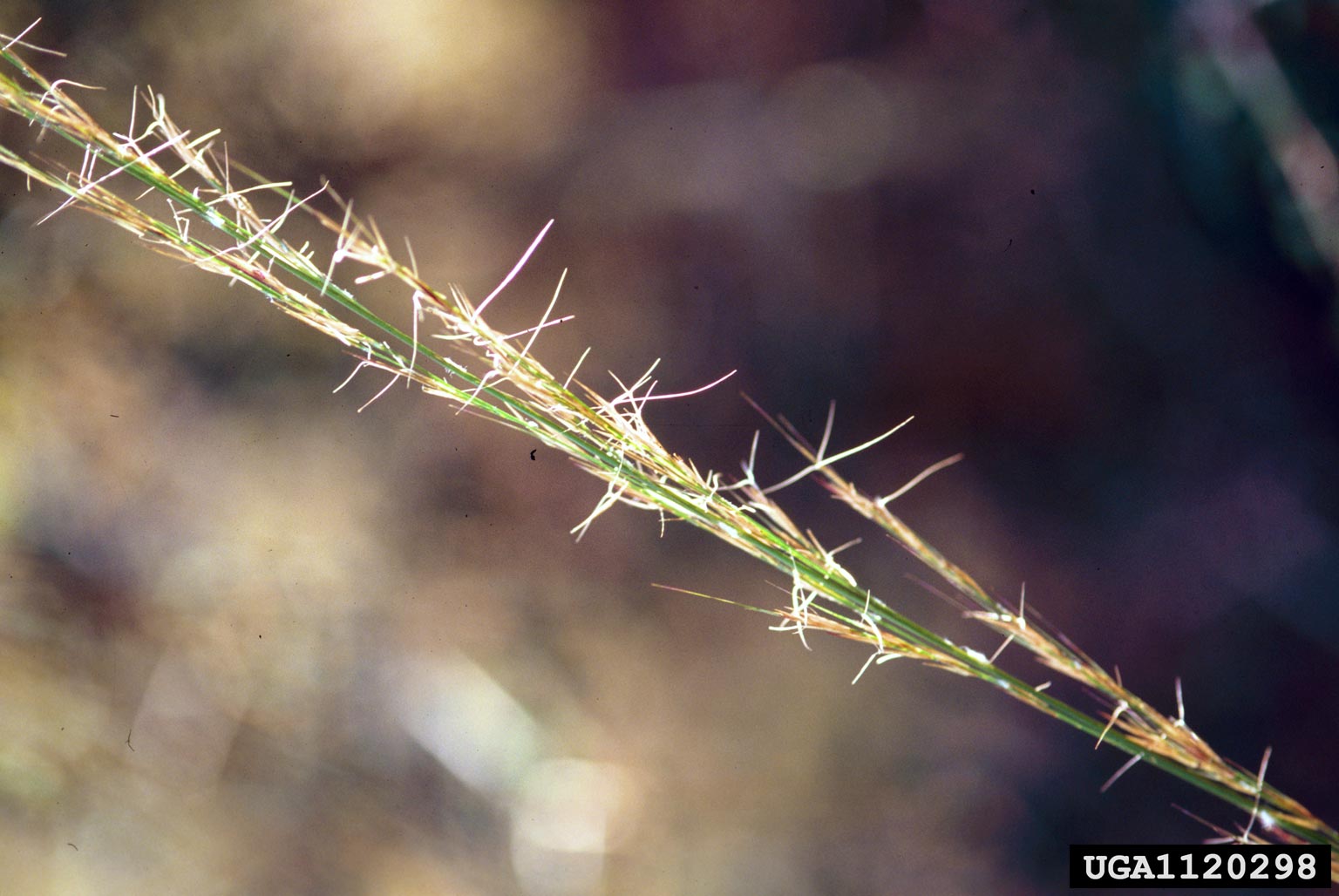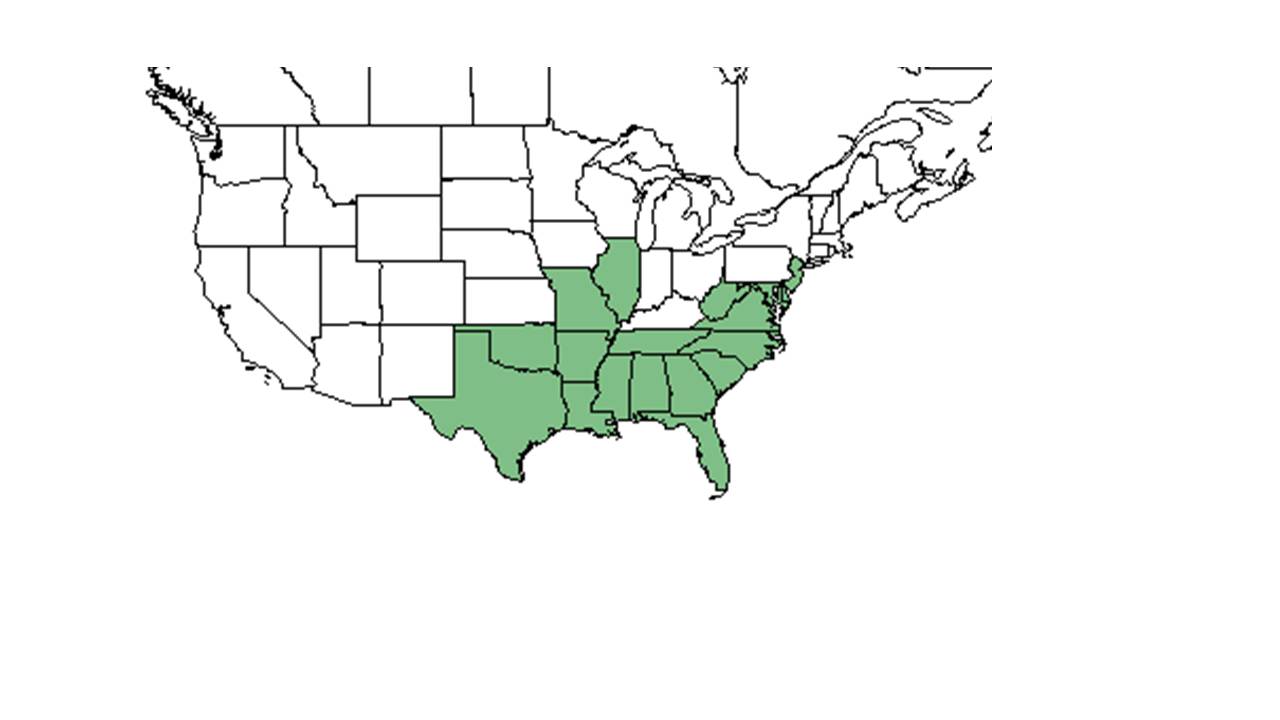Difference between revisions of "Aristida lanosa"
(→Taxonomic notes) |
|||
| Line 20: | Line 20: | ||
}} | }} | ||
==Taxonomic notes== | ==Taxonomic notes== | ||
| − | Synonyms: ''A. lanosa'' var. ''lanosa'' | + | Synonyms: ''A. lanosa'' Muhlenberg ex Elliott var. ''lanosa''; ''A. lanosa'' Muhlenberg ex Elliott var. ''macera'' Fernald & Griscom |
| + | |||
==Description== | ==Description== | ||
<!-- Basic life history facts such as annual/perrenial, monoecious/dioecious, root morphology, seed type, etc. --> | <!-- Basic life history facts such as annual/perrenial, monoecious/dioecious, root morphology, seed type, etc. --> | ||
Revision as of 14:57, 14 March 2019
Common name: Woollysheath Three-awn
| Aristida lanosa | |
|---|---|

| |
| Photo by James H. Miller, USDA Forest Service, Bugwood.org | |
| Scientific classification | |
| Kingdom: | Plantae |
| Division: | Magnoliophyta - Flowering plants |
| Class: | Liliopsida – Monocotyledons |
| Order: | Poales |
| Family: | Poaceae ⁄ Gramineae |
| Genus: | Aristida |
| Species: | A. lanosa |
| Binomial name | |
| Aristida lanosa Muhl. ex Elliott | |

| |
| Natural range of Aristida lanosa from USDA NRCS Plants Database. | |
Contents
Taxonomic notes
Synonyms: A. lanosa Muhlenberg ex Elliott var. lanosa; A. lanosa Muhlenberg ex Elliott var. macera Fernald & Griscom
Description
Tufted perennials. Culms are frequently geniculate, growing 7-12 dm tall. Nodes are glabrous or floccose; branches form lower nodes. Internodes are glabrous. Leaves are mostly low cauline; blades scaberulous beneath on margins and grow up to 4 dm long and 0.5 mm wide. Sheath margins usually scarious and longer than internodes, floccose are lanose. Ligules are short ciliate and 0.1-0.2 mm long. Panicles or racemes are narrow. Panicles are brownish, 3-4.5 dm long. Branches ascending and are scaberulous. Pedicels are unequal and scaberulous. Spikelets are 1-flowered and up to 10-18 mm long, and are frequently in 3’s. The spikelets are disarticulating above glumes. The pedicels are 1-6 mm long. Glumes are 1-nerved or first faintly 3-5 nerve and are scaberulous, margins are usually scarious, acuminate to short-awned, the first glume 10-18 mm long, the second is 9-12 mm long. Lemmas are faintly 3-nerved, spotted-papillose, margins scarious, and frequently enrolled in awns of 3. The lemma body is 8-9 mm long and the awns are ascending to divergent, they are twisted or straight basally, unequal, 5-30 mm long. Paleas are absent. The callus bearded and grow up to 1 mm long. The grain is linear, are yellowish in color, and grow up to 6.5 mm long. Plants are abundant in dry, sterile soils. Flowers from August to October.[1]
Distribution
The distribution of Aristida lanosa is from New Jersey, south to Florida, and west to Texas.[2]
Ecology
Habitat
It occurs in frequently burned upland longleaf pine-wiregrass communities, longleaf and shortleaf pine-oak hickory communities, loblolly pine plantations on Ultisols, the higher parts of pine flatwoods, as well as edges of unburned hardwood foresets.[3][4] Soil conditions range from wet to very well drained and sand to loamy sands. It is found in dry sandy soils of sandhill habitats and fields.[2] It can also be found in human disturbed areas such as recreational areas, roadsides, longleaf pine clearings, dry sandy soil of campsites. This species grows in large clumps.[3]
Associated species include longleaf pine, oak, hickory, Pinus echinata, Cornus florida, Eupatorium compositifolium, Callicorpa americana, Quercus hemisphaerica, Homomelis virginiana, Rubus cuneifolius, Vitis rotundifolius, loblolly pine, shortleaf pine, and others.[3]
Phenology
It flowers from August to October and has been seen fruiting from October to November.[3][2]
Conservation and management
Cultivation and restoration
Photo Gallery
References and notes
- ↑ Radford, Albert E., Harry E. Ahles, and C. Ritchie Bell. Manual of the Vascular Flora of the Carolinas. 1964, 1968. The University of North Carolina Press. 97-98. Print.
- ↑ 2.0 2.1 2.2 Weakley, Alan S. Flora of the Southern and Mid-Atlantic States: Working Draft of 21 May 2015. University of North Carolina Herbarium (NCU). PDF. 359.
- ↑ 3.0 3.1 3.2 3.3 Florida State University Robert K. Godfrey Herbarium database. URL: http://herbarium.bio.fsu.edu. Last accessed: June 2014. Collectors: Loran C. Anderson, Gary R. Knight, George R. Cooley, H. Allan Gleason, R. Kral, R.K. Godfrey, A. F. Clewell, A. H. Curtiss, A. Gholson Jr., Wilson Baker, James R. Burkhalter, Angela M. Reid, K. M. Robertson, and Bill Boothe. States and Counties: Florida: Wakulla, Okaloosa, Jackson, Hernando, Washington, Liberty, Leon, Holmes, Duval, Gadsden, Santa Rosa, and Calhoun. Georgia: Baker.
- ↑ Brockway, D. G. and C. E. Lewis (1997). "Long-term effects of dormant-season precribed fire on plant community diversity, structure and productivity in a longleaf pine wiregrass ecosystem." Forest Ecology and Management 96: 167-183.